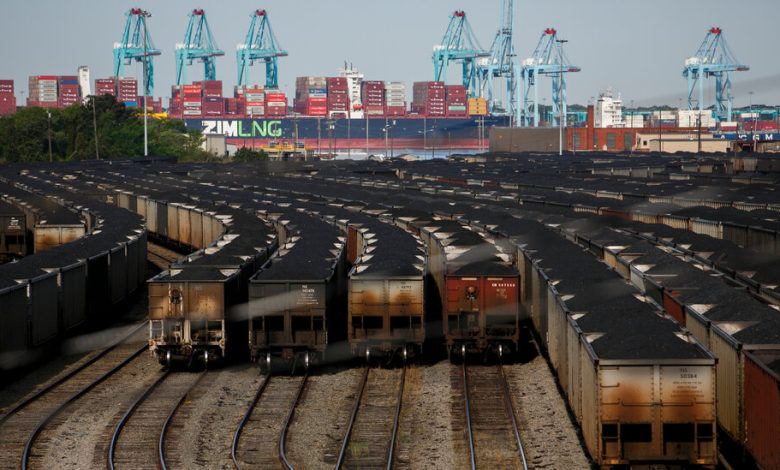Trains, Trucks and Tractors: The Race to Reroute Goods From Baltimore

New John Deere tractors made their way last week through the sprawling port of Brunswick, Ga., their distinctive green paint glinting in the sunshine. Stevedores drove the tractors up a ramp into the belly of the Leo Spirit, a ship that would take them to Asia.
As orderly as everything looked, the tractor convoy was an example of the enormous lengths to which East Coast ports, railways, truckers and shipping lines have gone to remake supply chains after a container ship crashed into the Francis Scott Key Bridge in Baltimore last month. The bridge’s collapse closed most of the Port of Baltimore, which last year handled 1.3 million tons of farm and construction machinery and 850,000 cars and light trucks.
The Deere tractors would normally be shipped from Baltimore, getting there on trains from a factory in Waterloo, Iowa, according to Georgia port officials. Instead, the tractors had to be trucked to Brunswick, a journey that adds time and costs.
“If we didn’t have Brunswick, I think the supply chain would be in a bad way on the auto side,” said Griff Lynch, chief executive of the Georgia Ports Authority, who has overseen an ambitious expansion of Brunswick. But he said some areas at the port were now getting congested and acknowledged there was no way Brunswick could handle all of Baltimore’s vehicles — in April, the port expects to take around 17,000 more than the 70,000 it normally handles in a month.
Such frenetic workarounds to deal with Baltimore’s closing are happening up and down the East Coast, for vehicles, shipping containers and coal.
But not all the adjustments are going well. The trucking industry is under immense stress with executives saying they are struggling to get drivers and loads to where they are needed on time and without losing money.
